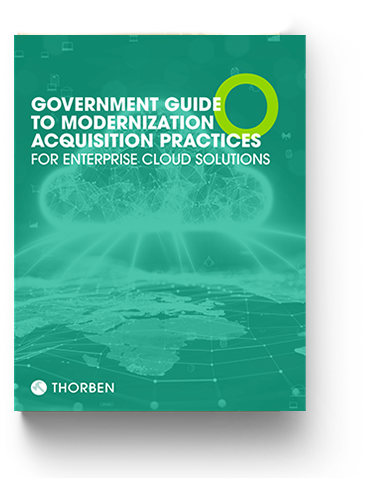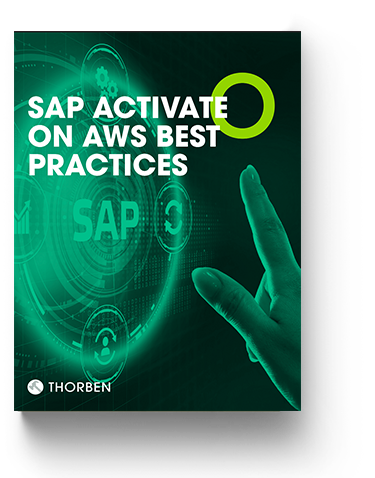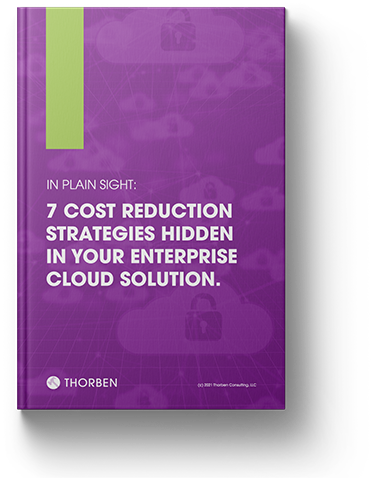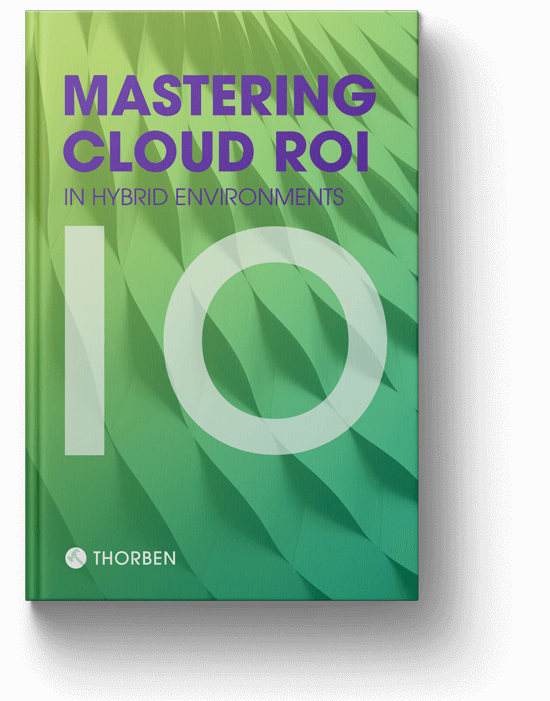Introduction
In this whitepaper, we highlight five business strategies that will allow your business or organization to master cloud ROI for hybrid environments. Your cloud strategy should not be driven by saving money, but by increasing profits and creating value.
In the past, businesses and organizations pondered personal computers versus typewriters, digital phone services versus in–house phone systems, and networked resources versus standalone. Today, businesses and organizations ponder the question: To Cloud, or not to Cloud. While there has been much hand–wringing, teeth–gnashing and beads of sweat surrounding these choices, the inevitability of innovation replacing legacy technology makes converting to the Cloud a simple decision.
Once your business or organization accepts the inevitability of the Cloud, your only focus should be on how you can optimize your cloud implementation and, in turn, master cloud return on investment (ROI) on an ongoing basis.
While ROI calculations are the norm for most IT projects, cloud ROI calculations require consideration of more significant strategic business factors due to the transformational and strategic opportunities offered. The three evaluation steps Thorben recommends are:
- Conventional ROI Calculation
- Application–Level Optimization Opportunities
- Strategic Business Innovation Transformation
This approach includes business development, financial, and strategic considerations. This evaluation approach elevates your cloud strategy from purely a technical decision to one that can have the greatest impact on the value of your business or organization.
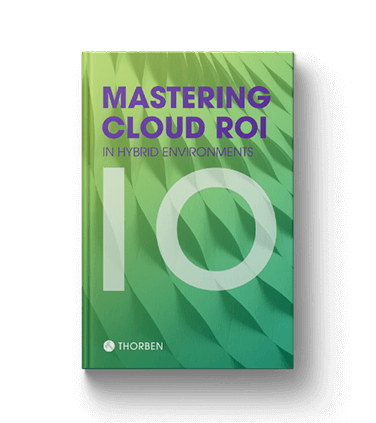
Download Full PDF of all our Cloud ROI Resources
CONVENTIONAL ROI
THE (G)OLD STANDARD
Conventional ROI compares your status quo baseline operations with the anticipated costs and benefits of your new proposed initiative. Depending on the orientation, structure, and skill sets of your IT department, this may be from a network infrastructure perspective or from a capability development perspective.
For cloud projects, the areas that usually drive the ROI Analysis include:
- Capital Expense vs Operational Expense
- Staffing Changes
- Efficiency Gains for Staff
- Efficiency Gains for Customers
- Transition Expenses
- Time to Market
The gains are usually attributed to productivity and accessibility of application functions.
Cloud solutions have the potential to improve:
- Disaster Recovery
- Continuity of Operations
- Accessibility & Uptime
- Backup & Storage Efficiency
- Test & Development Capabilities
- Standardization
- Flexibility
- Agility
When IT projects were novel ideas and primarily cost centers, this approach was good, as far as it goes.
Conventional ROI compares your status quo baseline operations with the anticipated costs and benefits of your new proposed initiative.
CLOUD OPTIMIZATION IMPACT
REAL ROI WITH THE CLOUD.
The Cloud is clearly the best option for companies that are developing new capabilities or in growth (or contraction) mode. Test and development efforts often require expansion and contraction of computing needs as a predictable part of their process. Cloud virtualization of environments greatly improves integration testing. The Cloud also supports organizations which are looking to expand access to existing applications, to update, or to replace a significant number of legacy applications. Expanding or contracting staff and customer audiences can also benefit from the Cloud. Seasonal businesses or organizations with proper planning can use the Cloud to effectively manage their budget.
For businesses with variable computing needs due to rapid growth, migration or transitions, or seasonality, cloud solutions are optimal.For companies that project a static IT capability footprint or who want to retain a significant number of legacy applications, the ROI calculations require more attention to detail.Even in these cases, details can still win championships for ROI calculations.
Other considerations that impact cloud ROI calculations include:
- Security Concerns
- Compliance or Regulatory Requirements
- Audit Compliance
- Performance Needs
While each of these can certainly be handled effectively in a cloud environment, these consideration often drive more heterogeneous solutions — or what is referred to as hybrid cloud solutions.
Some capabilities, requirements, and data may be better suited to public cloud environments, while others might be better served in private cloud or even on–premises cloud implementations. Even more so, with the extreme competition and different pricing structures offered by the various cloud providers, understanding the opportunities in different environments can help you a lot.
Cloud virtualization of environments greatly improves integration testing and supports organizations in replacing a significant number of legacy applications.
APPLICATION LEVEL CLOUD STRATEGY
DON’T FORGET APPLICATIONS.
Your analysis needs to go down to the application level if you want to optimize your cloud costs and benefits. If your applications have high storage requirements, use the cloud provider with lower storage rates. If your applications have high processing needs or spin rates, use the cloud provider with low processing rates. Take advantage of the best opportunities that are being offered in the current market environment. This application level analysis will allow you to avoid some of the “surprises” that less–diligent cloud users often encounter.
Other capacity planning goofs that can severely impact your cloud costs involve using recent or average data rather than truly understanding the peak and trough usage scenarios, including seasonality, for each application. Without an experienced cloud architecture team on your side, you can experience significantly higher costs than your original analysis anticipated. This can severely negatively impact your realized ROI. Self–inflicted wounds are often the most painful.
Latency can be another hidden killer of cloud ROI. We have all driven by a construction site and seen guys leaning on shovels or taking smoke breaks as all eyes were on one guy doing a critical path function on the construction project. While most people grouse about this, the extent this happens in most every business is not as visible, but just as pervasive. This can also happen with applications in a cloud environment without proper planning.
Experienced cloud architects can help you leapfrog some of these foreseeable pitfalls of cloud implementations. Generally, organizations only make one big transition to the Cloud, so it’s beneficial to tap into the wisdom of people who have supported multiple cloud implementations.
This application-level analysis will allow you to avoid some of the “surprises” that less–diligent cloud users often encounter.
MAGNIFYING YOUR CLOUD ROI
BRING BENEFITS INTO FOCUS.
Most IT–driven cloud ROI analyses stop at either the first high level analysis or the most detailed application level analysis. In order to truly understand the power of the Cloud, your ROI analysis needs to extend to the strategic business innovation transformation level. This is where CEOs, CFOs, and Business Development teams can really magnify the benefits of your organization’s cloud ROI.
Business Development Strategy
Reallocate upfront cost savings to revenue generating activities. The shift from upfront capital costs to pay–as–you–go cloud computing can create an opportunity to fund business development activities.
Big Data Strategy
Capture and analyze data available through the Cloud to better understand your customers and your staff. Use decision support tools and develop predictive analytics to improve efficiency throughout your organizations and improve your customer journey.
Increase Attractiveness of Your Organization for Customers & Staff
Improve your services and expand accessibility of capabilities through the Cloud. Improve customer retention and staff retention through using up–to–date technology and functiona–ity upgrades.
Drive Innovation
Once you are committed to the Cloud, commit to improve your responsiveness to customers, staff, and your competition. Develop, test, and execute more functionality.
Build a Valuable Enterprise
Improved cash flow will drive improved value calculations. More innovative, responsive capabilities will increase your value multiples. Big Data Analytics will make your business more powerful and more attractive to strategic buyers.
The Cloud represents a strategic commitment to provide more value to everyone your orga– nization touches. The Cloud provides opportunity for the value of your business to grow geometrically.
In order to truly understand the power of the Cloud, your ROI analysis needs to extend to the strategic business innovation transformation level.

